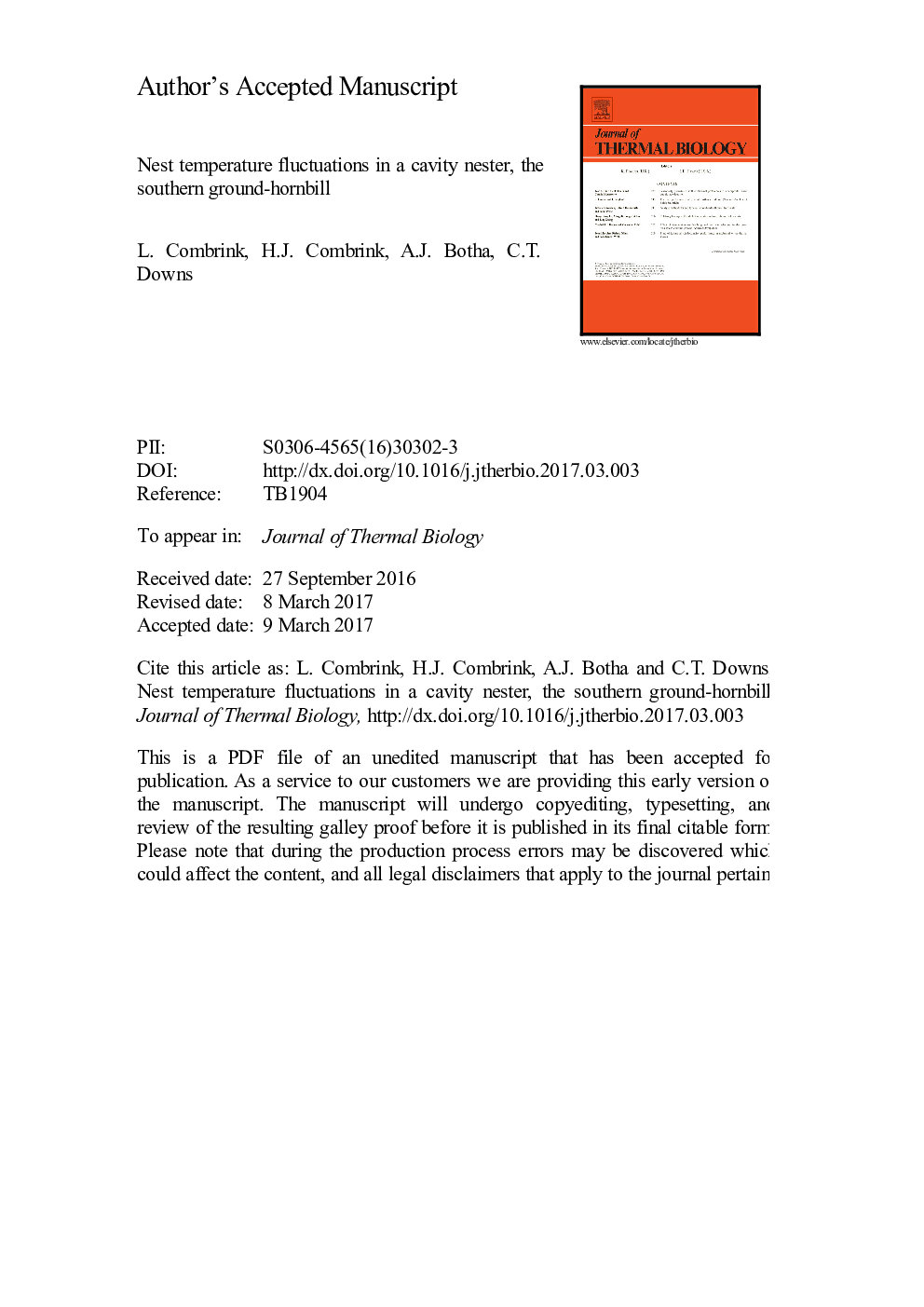| کد مقاله | کد نشریه | سال انتشار | مقاله انگلیسی | نسخه تمام متن |
|---|---|---|---|---|
| 5593511 | 1571081 | 2017 | 34 صفحه PDF | دانلود رایگان |
عنوان انگلیسی مقاله ISI
Nest temperature fluctuations in a cavity nester, the southern ground-hornbill
ترجمه فارسی عنوان
نوسانات درجه حرارت پنجه در یک حفره ای، جغرافیایی جنوبی زمین
دانلود مقاله + سفارش ترجمه
دانلود مقاله ISI انگلیسی
رایگان برای ایرانیان
کلمات کلیدی
موضوعات مرتبط
علوم زیستی و بیوفناوری
علوم کشاورزی و بیولوژیک
علوم کشاورزی و بیولوژیک (عمومی)
چکیده انگلیسی
Southern ground-hornbills Bucorvus leadbeateri inhabit savanna and bushveld regions of South Africa. They nest in the austral summer, which coincides with the wet season and hottest daytime temperatures in the region. They are secondary cavity nesters and typically nest in large cavities in trees, cliffs and earth banks, but readily use artificial nest boxes. Southern ground-hornbills are listed as Endangered in South Africa, with reintroductions into suitable areas highlighted as a viable conservation intervention for the species. Nest microclimate, and the possible implications this may have for the breeding biology of southern ground-hornbills, have never been investigated. We used temperature dataloggers to record nest cavity temperature and ambient temperature for one artificial and 11 natural southern ground-hornbill tree cavity nests combined, spanning two breeding seasons. Mean hourly nest temperature, as well as mean minimum and mean maximum nest temperature, differed significantly between southern ground-hornbill nests in both breeding seasons. Mean nest temperature also differed significantly from mean ambient temperature for both seasons. Natural nest cavities provided a buffer against the ambient temperature fluctuations. The artificial nest provided little insulation against temperature extremes, being warmer and cooler than the maximum and minimum local ambient temperatures, respectively. Nest cavity temperature was not found to have an influence on the breeding success of the southern ground-hornbill groups investigated in this study. These results have potentially important implications for southern ground-hornbill conservation and artificial nest design, as they suggest that the birds can tolerate greater nest cavity temperature extremes than previously thought.
ناشر
Database: Elsevier - ScienceDirect (ساینس دایرکت)
Journal: Journal of Thermal Biology - Volume 66, May 2017, Pages 21-26
Journal: Journal of Thermal Biology - Volume 66, May 2017, Pages 21-26
نویسندگان
L. Combrink, H.J. Combrink, A.J. Botha, C.T. Downs,
